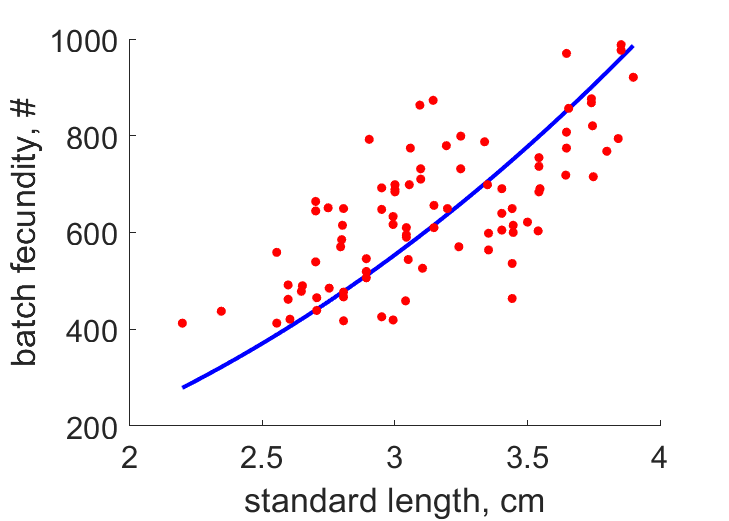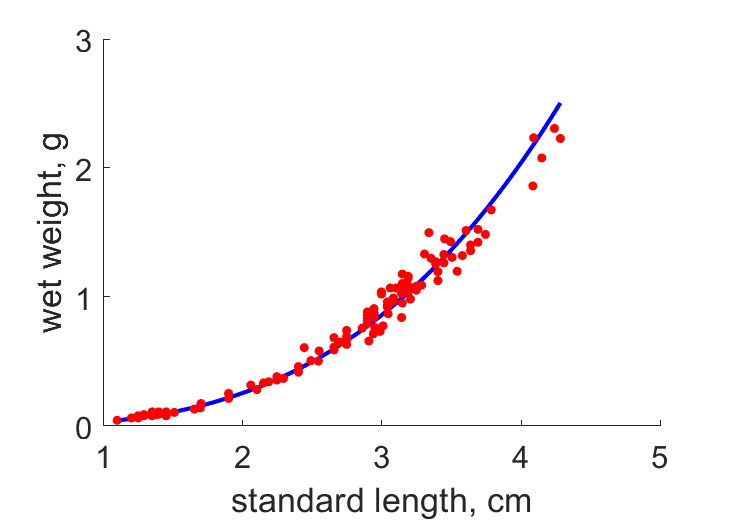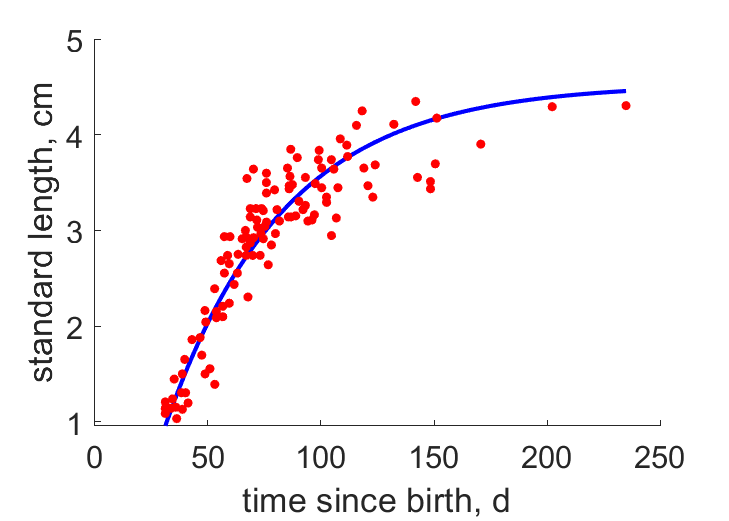Predictions & Data for this entry
| Model: abj | climate: MA | migrate: | phylum: |
| COMPLETE = 2.6 | ecozone: MIE, MPW | food: biCi, biPz | class: |
| MRE = 0.054 | habitat: 0iMr | gender: D | order: |
| SMSE = 0.007 | embryo: Mbm | reprod: O | family: |
Zero-variate data
| Data | Observed | Predicted | (RE) | Unit | Description | Reference |
|---|---|---|---|---|---|---|
| tj | 31 | 32.28 | (0.04129) | d | time since birth at metam | GoulDoug2016 |
| tp | 57.5 | 53.51 | (0.06932) | d | time since birth at puberty | GoulDoug2016 |
| am | 368 | 372.6 | (0.01237) | d | life span | GoulDoug2016 |
| Lj | 1.1 | 1.03 | (0.06318) | cm | standard length at metam | GoulDoug2016 |
| Lp | 2.2 | 2.197 | (0.001405) | cm | standard length at puberty | GoulDoug2016 |
| Li | 4.4 | 4.53 | (0.02955) | cm | ultimate standard length | GoulDoug2016 |
| Wwb | 6.54e-05 | 6.534e-05 | (0.0009141) | g | wet weight at birth | GoulDoug2016 |
Uni- and bivariate data
| Data | Figure | Independent variable | Dependent variable | (RE) | Reference |
|---|---|---|---|---|---|
| LN |  | standard length | batch fecundity | (0.1557) | GoulDoug2016 |
| LW |  | standard length | wet weight | (0.08069) | GoulDoug2016 |
| tL |  | time since birth | standard length | (0.0874) | GoulDoug2016 |
Pseudo-data at Tref = 20°C
| Data | Generalised animal | Siphamia tubifer | Unit | Description |
|---|---|---|---|---|
| v | 0.02 | 0.02228 | cm/d | energy conductance |
| p_M | 18 | 171.7 | J/d.cm^3 | vol-spec som maint |
| k_J | 0.002 | 0.002 | 1/d | maturity maint rate coefficient |
| k | 0.3 | 0.06066 | - | maintenance ratio |
| kap | 0.8 | 0.9933 | - | allocation fraction to soma |
| kap_G | 0.8 | 0.8032 | - | growth efficiency |
| kap_R | 0.95 | 0.95 | - | reproduction efficiency |
Discussion
- This analysis assumes 4 broods per yr
Facts
- Male tends the eggs by storing them in his mouth (Ref: GoulDoug2016)
- Diameter of bioluminescent organ is proportional to length and number of bacteria Photobacterium mandapamensis grows exponentially with length (Ref: GoulDoug2016)
- Associates with sea urchins Diadema setosum and Echinothrix calamaris (Ref: GoulDoug2016)
Bibliography